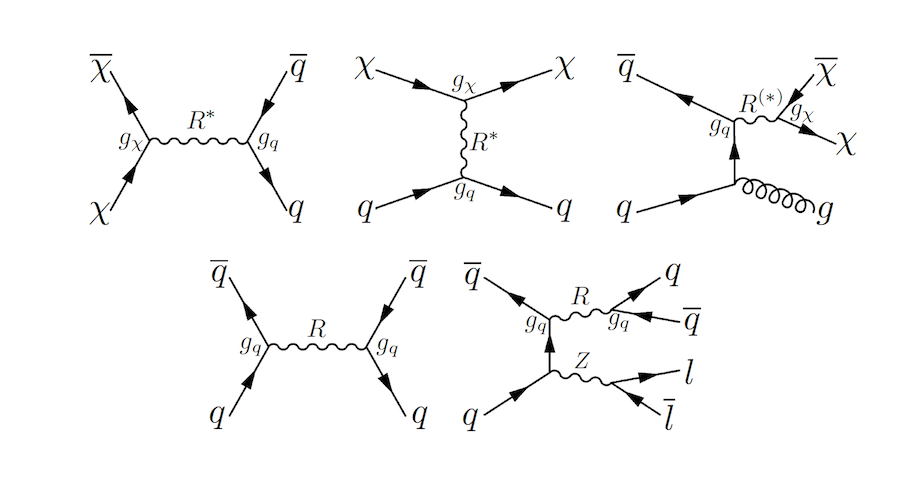New $Z^{\prime}$ gauge bosons arise in many extensions of the Standard Model and predict resonances in the dilepton invariant mass spectrum. We present ZPEED ($Z^{\prime}$ Exclusions from Experimental Data), an open-source code providing fast likelihoods and exclusion bounds for general $Z^{\prime}$ models based on the most recently published 139 fb$^{-1}$ ATLAS dilepton data. PDF and detector...
I will discuss the Inert Doublet Model, a Two Higgs Doublet Model with an exact Z_2 symmetry that provides a dark matter candidate. I will elaborate on current constraints on the parameter space as well as discovery prospects at current and future colliders.
In this talk, based on arXiv:1810.00880 and ongoing work, I will present a new mechanism of Baryogenesis and Dark Matter production in which both the dark matter relic abundance and the baryon asymmetry arise from neutral B meson oscillations and subsequent decays in the early Universe.
This mechanism would have distinctive experimental signals that I will discuss in detail:
i) the new...
Axion-like particles with masses in the keV-GeV range have a profound impact on the cosmological evolution of our Universe, in particular on the abundance of light elements produced during Big Bang Nucleosynthesis. The resulting limits are complementary to searches in the laboratory and provide valuable additional information regarding the validity of a given point in parameter space. A...
We introduce a new density estimator based on Markov Chains. This estimator presents several benefits with respect to the usual ones and can be used straightforwardly in all density-based approaches to data science. After showing its consistency, we will present some promising results when applied to general scope datasets. Finally, we perform a preliminary analysis of a subset of the latest...
Semi-visible jets arise in strongly interacting dark sectors, where parton evolution includes dark sector emissions, resulting in jets overlapping with missing transverse momentum. The implementation of semi-visible jets is done using the Pythia Hidden valley module to duplicate the dark sector showering. In this work, several jet substructure observables have been examined to compare...
Strongly interacting dark sectors predict dark showers, which give rise to novel LHC signatures such as semi-visible jets. However, these are difficult to search for with conventional analysis techniques. In my talk I will first consider the sensitivity of existing and prospective LHC searches to semi-visible jets and then discuss how deep learning can help to distinguish dark showers from...
Neutral mesons decay is often considered the dominant production mechanism for light dark photons in proton-proton and proton-nucleus collision. However, the produced hadronic showers also transfer a relevant amount of their energies into electromagnetic subshowers. We show that in certain cases, the positrons created in these sub-showers can lead to dark photon production rates significantly...
We study discovery prospects of the real triplet model at the LHC and a future 100TeV $pp$ collider. The model provides a dark matter candidate and its smoking-gun signature is the so-called "disappearing charged tracks". We recast current 13TeV LHC searches for disappearing tracks and find that the LHC presently excludes a real triplet scalar lighter than 287GeV with...
